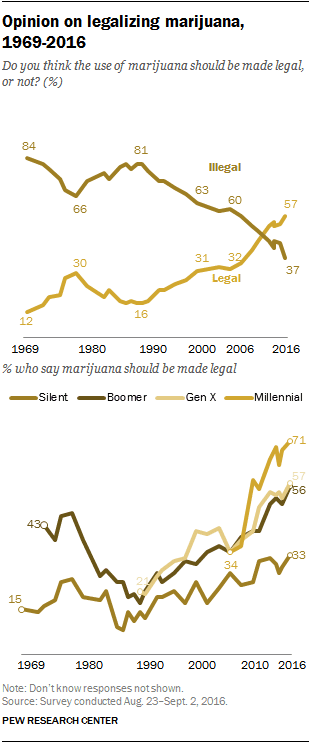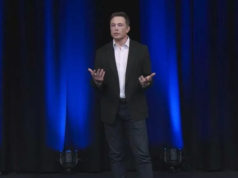I’m a venture capitalist and a medical cannabis user.
The first time I tried medical cannabis, I had just tried to trigger a chronic condition that causes severe intestinal pain when I eat.
I was trying to force my doctor to prescribe painkillers for me. That night, I’d eaten an entire pizza to induce enough pain to get me on drugs. I wound up trying medical marijuana instead and it changed my perspective on the drug.
Growing up, I never imagined I would be here.
I grew up in Japan and China, where cannabis consumption meant extended jail time. It never occurred to me that using medical marijuana would be an option. Around 2012, I was experiencing flare-ups more regularly and had already spent years meeting with specialists in the Bay Area looking for an effective treatment for my condition.
“You really should try medical marijuana.”
One night I was venting to my friend Blake Krikorian, the co-founder and CEO of SlingMedia, who suggested I try a list of alternative medicine including acupuncture, herbal medicine, and medicinal cannabis. While I respected Blake, I was highly skeptical that cannabis could help. As time passed and my condition got worse; however, I started to conduct more research online.
I found that I wasn’t alone with my pain. According to NIH, 11% of Americans suffer from chronic pain. Another NIH study estimates that chronic pain affects nearly 100 million Americans, and between 5 to 8 million use opioids for long-term pain management.
Latest Crunch Report
Personally, I did not want to take my Vicodin prescription given the dulling side effects and risk for addiction.
The body of research around using cannabis for chronic pain was starting to make sense. I learned that cannabis could be an effective option for reducing the intensity of pain on everything from migraines to anxiety, is non-habit forming, and doesn’t carry the nasty side effects that some prescription medications have.
One study even found that smoking cannabis reduces pain associated with nerve damage (e.g., neuropathy) in patients with HIV by more than 30 percent compared to placebo.
While the concept of using cannabis evoked the image of a pothead smoking out of a giant bong, I found the industry had evolved significantly. Licensed doctors can prescribe marijuana in liquid, edible, and pill forms measured out to an exact dosage just like you might take any other prescription.
Gradually I started to warm to the idea of giving it a try.
While winning me over took decades, marijuana is perhaps fighting a much tougher fight among my fellow venture capitalists. While our firm invested in Eaze, a company in the industry, many Silicon Valley investors still find the business very much taboo. Many VCs are either prohibited from investing in marijuana or aren’t willing to be “that investor”, despite some of them being cannabis advocates or users behind the scenes.
That may change soon as the share of Americans who favor legalizing the use of marijuana continues to increase. Pew Research recently found that 57% of U.S. adults say the use of marijuana should be made legal, while 37% say it should be illegal.

A decade ago, opinion on legalizing marijuana was nearly the reverse – just 32% favored legalization, while 60% were opposed. Additionally, a recent Gallop poll found that thirteen percent of U.S. adults currently smoke marijuana, nearly double the percentage who reported smoking marijuana only three years ago in 2013.
Crunchbase
The battleground around cannabis is widespread this election season with cannabis initiatives on the ballot in nine states. California, Arizona, Nevada, Maine and Massachusetts have adult use legalization on the ballot while North Dakota, Arkansas, Montana, and Florida have medical use or expanded medical use on the ballot.
In my home state of California, easily the largest cannabis market in the US, medicinal cannabis has been legal for 20 years, but without safeguards or tax revenue. California’s Proposition 64 hopes to create a safe, legal, comprehensive system for recreational cannabis use while implementing safeguards, similar to what we’ve implemented for alcohol.
There are plenty of positive studies and statistics to support Prop 64 and the benefit of cannabis legalization.
In Colorado, where recreational cannabis was implemented in 2014, new studies have found that both the crime rate related to cannabis and the percentage of teen users has fallen. Other benefits include decreases in opioid usage in states that legalize medical marijuana.
However, there is even more at stake now. In the year of Black Lives Matter and politicians vehemently expressing the need for criminal justice reform, the legalization of cannabis will reduce the systematic incarceration of African Americans for marijuana possession.
Of the 8.2 million arrests for marijuana between 2001 and 2010, 88% were simply for possession, and African Americans were nearly 4 times more likely to be arrested in these cases than whites. Prop 64 could be a step towards reforming our criminal justice system by preventing unnecessary incarceration.
The night I ate that pizza, I experienced excruciating pain but also had a revelation: After just a small amount of cannabis, my pain was miraculously relieved while my head remained clear — and I discovered that, for me, marijuana was safer and more effective than most painkillers. I believe cannabis should be recreationally legal for adults, and regulated in a similar way to alcohol. My hope is that this November the people of my home state of California agree.
I now believe cannabis should be recreationally legal for adults and regulated in a similar way to alcohol. My hope is that this November the people of my home state of California agree.
Featured Image: Pete Starman/Heath Korvola/Getty Images







